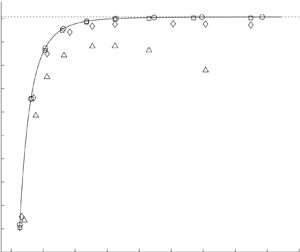Published online by Cambridge University Press: 19 April 2023

A theoretical study is made of the stability of propagating internal gravity wave modes along a horizontal stratified fluid layer bounded by rigid walls. The analysis is based on the Floquet eigenvalue problem for infinitesimal perturbations to a wave mode of small amplitude. The appropriate instability mechanism hinges on how the perturbation spatial scale relative to the basic-state wavelength, controlled by a parameter  $\mu$, compares to the basic-state amplitude parameter,
$\mu$, compares to the basic-state amplitude parameter,  $\epsilon \ll 1$. For
$\epsilon \ll 1$. For  $\mu ={O}(1)$, the onset of instability arises due to perturbations that form resonant triads with the underlying wave mode. For short-scale perturbations such that
$\mu ={O}(1)$, the onset of instability arises due to perturbations that form resonant triads with the underlying wave mode. For short-scale perturbations such that  $\mu \ll 1$ but
$\mu \ll 1$ but  $\alpha =\mu /\epsilon \gg 1$, this triad resonance instability reduces to the familiar parametric subharmonic instability (PSI), where triads comprise fine-scale perturbations with half the basic-wave frequency. However, as
$\alpha =\mu /\epsilon \gg 1$, this triad resonance instability reduces to the familiar parametric subharmonic instability (PSI), where triads comprise fine-scale perturbations with half the basic-wave frequency. However, as  $\mu$ is further decreased holding
$\mu$ is further decreased holding  $\epsilon$ fixed, higher-frequency perturbations than these two subharmonics come into play, and when
$\epsilon$ fixed, higher-frequency perturbations than these two subharmonics come into play, and when  $\alpha ={O}(1)$ Floquet modes feature broadband spectrum. This broadening phenomenon is a manifestation of the advection of small-scale perturbations by the basic-wave velocity field. By working with a set of ‘streamline coordinates’ in the frame of the basic wave, this advection can be ‘factored out’. Importantly, when
$\alpha ={O}(1)$ Floquet modes feature broadband spectrum. This broadening phenomenon is a manifestation of the advection of small-scale perturbations by the basic-wave velocity field. By working with a set of ‘streamline coordinates’ in the frame of the basic wave, this advection can be ‘factored out’. Importantly, when  $\alpha ={O}(1)$ PSI is replaced by a novel, multi-mode resonance mechanism which has a stabilising effect that provides an inviscid short-scale cut-off to PSI. The theoretical predictions are supported by numerical results from solving the Floquet eigenvalue problem for a mode-1 basic state.
$\alpha ={O}(1)$ PSI is replaced by a novel, multi-mode resonance mechanism which has a stabilising effect that provides an inviscid short-scale cut-off to PSI. The theoretical predictions are supported by numerical results from solving the Floquet eigenvalue problem for a mode-1 basic state.
To send this article to your Kindle, first ensure no-reply@cambridge.org is added to your Approved Personal Document E-mail List under your Personal Document Settings on the Manage Your Content and Devices page of your Amazon account. Then enter the ‘name’ part of your Kindle email address below. Find out more about sending to your Kindle. Find out more about saving to your Kindle.
Note you can select to save to either the @free.kindle.com or @kindle.com variations. ‘@free.kindle.com’ emails are free but can only be saved to your device when it is connected to wi-fi. ‘@kindle.com’ emails can be delivered even when you are not connected to wi-fi, but note that service fees apply.
Find out more about the Kindle Personal Document Service.
To save this article to your Dropbox account, please select one or more formats and confirm that you agree to abide by our usage policies. If this is the first time you used this feature, you will be asked to authorise Cambridge Core to connect with your Dropbox account. Find out more about saving content to Dropbox.
To save this article to your Google Drive account, please select one or more formats and confirm that you agree to abide by our usage policies. If this is the first time you used this feature, you will be asked to authorise Cambridge Core to connect with your Google Drive account. Find out more about saving content to Google Drive.